How to grow annual dahlias
- Choosing a variety of annual dahlias.
- Sowing seeds in open ground.
- Growing seedlings of annual dahlias.
- Planting dahlias in the ground.
- Caring for annual dahlias.
- Growing annual dahlias in pots and flowerpots.
- How to preserve tubers.
- Dahlias in garden design.
Growing annual dahlias is not difficult at all.Even inexperienced flower growers will be able to plant and care for these annuals. In addition, growing annual dalias has its own advantages:
- Unlike perennial varieties of dahlias, annual varieties grow well from seeds. The difficult task of digging up and storing tubers until spring is eliminated. It is enough to buy seeds of the type you like and plant them in the spring.
- Growing seedlings allows you to get flowering plants as early as June.
- The flowering of annual varieties is lush and long-lasting (lasts until frost).
- The cost of dahlia seeds is much cheaper than tubers, and more plants can be grown.
What are the differences between varieties of annual dahlias?
Depending on the variety, annual dahlias vary in height, flowering time, shape and size of the inflorescence
- Low-growing varieties with a height of 15-20 cm to 45-60 cm.
- Medium-sized varieties grow up to 1-1.2 m.
- Dwarf varieties begin to bloom much earlier than taller varieties.
- The shape of the inflorescences can be simple, semi-double, double, cactus, or pompom.
On the seed bags, the manufacturer gives a description of the variety, sowing and flowering dates. Based on this information, it is easy to select the desired variety depending on the planting location. For growing annual dahlias on the balcony, in pots and flowerpots and for decorating borders and the foreground of mixborders, dwarf varieties are suitable, which are distinguished by early and intense flowering on compact bushes.
Popular varieties of low-growing dahlias: Merry guys, Figaro, Dandy, Bambino, Vasilisa, Piccolo, etc.
Taller dalias can be planted in flower beds and mixborders, in ridges, along fences and walls.Medium-sized annual dahlias: Bright pom-poms, Cactus mixture.
There are two options for growing annual dahlias:
- Sowing seeds directly into the ground.
- Growing through seedlings.
Sowing seeds in open ground
Annual dahlias can be grown by sowing seeds directly into open ground. Dalia grow better on light, breathable, neutral or slightly acidic soils. Pre-planting land preparation can be carried out in autumn or spring. Add rotted manure, humus, and compost to the dahlia area. Coarse sand and ash will help improve the structure of heavy soil.
When to plant. When determining the sowing time, you need to take into account that sprouts appear within a week. Therefore, you can plant seeds in open ground when there is no threat of frost.
Landing. The seeds are buried 1-1.5 cm with an interval of about 30 cm. Since some seeds may not germinate, it is better to plant 2 or 3 seeds side by side at a time. Subsequently, if the shoots are amicable, you can leave one, the strongest plant, and transplant the rest to another place.
Water the crops, mulch them or cover them with film to retain moisture.
Growing seedlings of annual dahlias
Growing annual dalias through seedlings allows you to get flowering plants as early as June. In the first half of March you can start sowing seeds.
A light substrate is poured into a plastic container with drainage holes in a layer of up to 5-7 cm. You can buy ready-made soil or prepare it yourself by mixing 2 parts of turf soil with 1 part humus and 1 part sand. Instead of sand, perlite or vermiculite is sometimes added.
We sow the seeds. Before sowing, it is advisable to spill the soil with a solution of potassium permanganate or phytosporin to prevent fungal diseases. Distribute the seeds on the surface and cover with a layer of soil up to 1.5 cm. Carefully water the crops and cover with film. In a warm, bright place, seedlings will appear in 5-7 days.
How to care for seedlings. As soon as the sprouts hatch, the film must be removed and good lighting and an optimal temperature of about 20 degrees must be provided. If there is not enough light, you need to organize additional lighting. In poor lighting, the seedlings become very elongated.
Watering should be moderate as the soil dries. Dahlias cannot tolerate waterlogging, which can lead to the development of a disease called blackleg.
Picking. In the phase of two true leaves, dahlias dive into separate pots, deepening the plants to the cotyledon leaves.
Two weeks after picking, the seedlings can be fed with complex fertilizer. After ten days, repeat feeding. Fertilize on moist soil so as not to burn the tender roots of young plants.
Above the third pair of true leaves you need to pinch the top. As a result, side shoots will grow and the bushes will be more lush.
Planting dahlias in open ground
Before planting in the garden, seedlings must be hardened off. Plants begin to be taken out into the fresh air, increasing the residence time. As soon as the threat of frost has passed, dahlias can be planted in the prepared area.
The area for planting dalia should be sunny with light fertile soil. You can add humus or compost to the planting hole and mix it with soil. Water the seedlings well two hours before planting. Plants should be transferred to the planting hole together with a lump of earth so as not to injure the roots.This way the bushes will take root faster.
The distance between plants depends on the variety. For low-growing dahlias, the gap is 30 cm, for taller species - 50 cm. Water the planted plants and mulch them.
Caring for annual dahlias
Annual dahlias are undemanding in care, which consists of watering, weeding and fertilizing.
Watering
Dahlias do not like prolonged waterlogging, so you need to water the plants as the soil dries out. In dry, hot weather, watering can be increased to twice a week. After watering, it is advisable to mulch the soil. Mulching helps retain moisture longer, and a crust does not form on the soil surface.
Weeding
Weeding is necessary to keep the area around the dahlias clean. Weeds take moisture and nutrients from plants, and access to light deteriorates. Weeding is best done on the second or third day after watering, while simultaneously loosening the soil. Loosening improves soil breathability and reduces moisture evaporation.
Top dressing
At the beginning of the growing season, our dahlias need nitrogen to grow green mass. Therefore, if organic fertilizers were not added to the planting hole when planting seedlings, you can feed the plants with mullein infusions (2 liters of infusion per 10 liters of water). Fertilize a week after transplantation. The day before applying fertilizer, the flowers should be watered.
During the period of budding and flowering, dahlias need phosphorus-potassium supplements. Potassium sulfate and superphosphate or a complex fertilizer with a low nitrogen content are suitable. Two feedings are enough: during budding and at the beginning of flowering.
With an excess of nitrogen, dahlia bushes begin to “fatten”, i.e. increase green mass to the detriment of flowering.In addition, such plants are more susceptible to infection by fungal diseases.
Timely removal of fading inflorescences allows you to prolong the flowering of dahlias, because the plant does not waste energy on ripening seeds and begins to produce new buds.
As you can see, caring for dahlias is simple and not at all complicated.
Growing dahlias in pots and flowerpots
Dwarf varieties are excellent for growing annual dahlias in pots and flowerpots. Bushes of dwarf dahlias grow no more than 40-50 cm. Flowering begins in June and continues until autumn frosts. Many low-growing varieties of dahlias have been developed, convenient for growing in pots and containers, which grow as a low compact bush with abundant flowering.
Pots should be spacious (at least 5 liters) with good drainage holes for water flow. You need to pour a layer of expanded clay on the bottom. The soil for planting is light, breathable, neutral or slightly acidic. Good results are achieved by adding hydrogel, vermiculite, and perlite. These additives accumulate excess moisture and then release it as the soil dries out.
Before planting, it is advisable to spill the soil with a solution of potassium permanganate or phytosporin to prevent diseases.
Caring for dahlias planted in flowerpots is somewhat more difficult than in open ground. Care will consist of more frequent watering, fertilizing, and timely removal of faded heads. Fertilizers are applied after watering once every two weeks. It is convenient to use complex liquid fertilizers. In August, all feeding is stopped.
In the fall, before frost sets in, dahlias can be brought into a warm room, and they will delight with their flowering for some time.
How to preserve tubers
Annual dahlias grown through seedlings, under good conditions, manage to form tubers within a season. In the fall, after the first frost, these tubers can be dug up and stored in a basement or other room with a temperature of about 5 degrees.
Low-growing dahlias form small nodules that can dry out during storage. Therefore, it is better to store them covered with earth, peat or sawdust. Some gardeners leave the tubers for storage in pots in which dahlias have been growing all summer. But you need to take into account that after a couple of years the tubers begin to degenerate, and the variety will need to be updated by sowing seeds.
You can collect the seeds yourself, leaving a few faded baskets until they dry completely. But dahlias grown from such seeds will most likely be different from the mother plant.
Annual dahlias in garden design
Due to the variety of colors and shapes, annual dahlias can be planted either in separate groups, creating bright spots among the greenery of the garden, or together with other annuals. Here it is important to choose the right combination of inflorescence colors and avoid excessive variegation.
Dahlias go well in flower beds and mixborders with delphinium, phlox, and lobelia. Asters, cosmos and zinnias in suitable colors can also make pleasant company.
Cactus-shaped and pompom dahlias, growing up to 1 m tall, will look good in the background of a flower bed or mixborder. You can plant decorative sunflowers next to them.
Dwarf varieties are suitable for decorating borders, borders and the foreground of mixborders. Low-growing marigolds and marigolds with their yellow-orange color palette are a great addition.
Dahlias planted in pots and flowerpots can be placed on terraces and verandas, near garden benches and gazebos.
Diseases and pests of annual dahlias
Annual dahlias can be affected by fungal and viral diseases. The most common: gray rot, white rot, fusarium, blackleg, viral mosaic.
Pests such as aphids, cutworm caterpillars, slugs and snails love to feast on the juicy green shoots and delicate petals of annual dalias.
To protect your flowers from diseases and pests, it is important to follow the growing rules and carry out preventive plant treatments.
Interesting video about caring for annual dahlias
Other useful articles about dahlias
- Varieties of perennial and annual dahlias. On this page you can get acquainted with the most different types of dahlias. There are small ones (which can be planted in pots or on the balcony), and there are large and simply huge ones.
- Growing perennial dahlias. Detailed recommendations on choosing a location, planting dates, preparing tubers, growing seedlings and much more.
- Diseases and pests of dahlias. The most effective methods of pest control and treatment of diseases of your flowers.
- When to dig and how to preserve tubers. Dahlias must not only be dug up in time, but also preserved during the winter. How best to do this in an apartment, read this article.
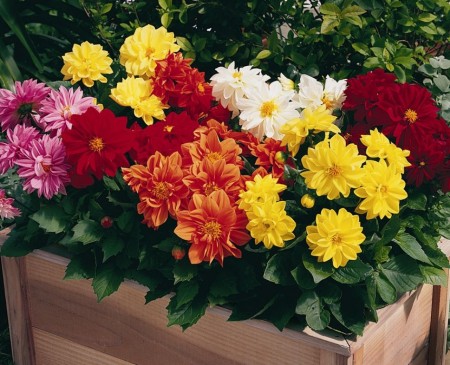
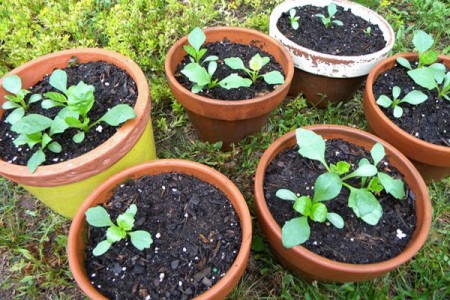
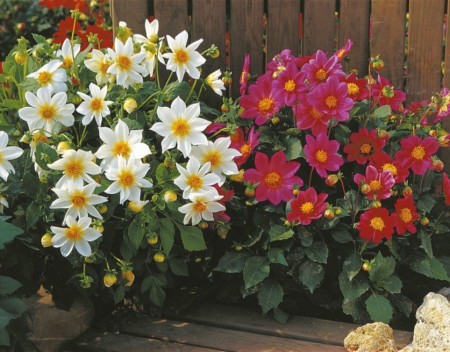
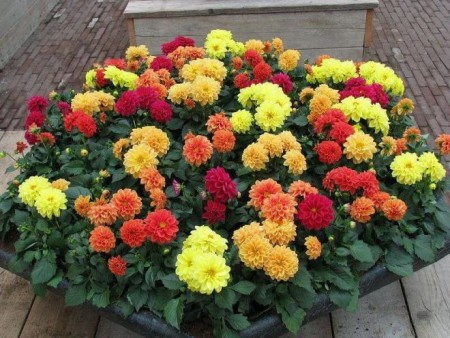
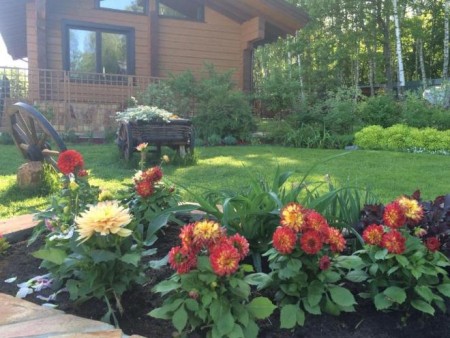
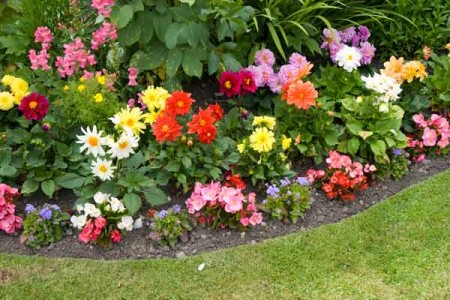

 CUCUMBERS NEVER GET SICK, I'VE BEEN USING ONLY THIS FOR 40 YEARS! I SHARE A SECRET WITH YOU, CUCUMBERS ARE LIKE THE PICTURE!
CUCUMBERS NEVER GET SICK, I'VE BEEN USING ONLY THIS FOR 40 YEARS! I SHARE A SECRET WITH YOU, CUCUMBERS ARE LIKE THE PICTURE! You can dig a bucket of potatoes from each bush. Do you think these are fairy tales? Watch the video
You can dig a bucket of potatoes from each bush. Do you think these are fairy tales? Watch the video
 How our fellow gardeners work in Korea. There is a lot to learn and just fun to watch.
How our fellow gardeners work in Korea. There is a lot to learn and just fun to watch. Eye trainer. The author claims that with daily viewing, vision is restored. They don't charge money for views.
Eye trainer. The author claims that with daily viewing, vision is restored. They don't charge money for views. A 3-ingredient cake recipe in 30 minutes is better than Napoleon. Simple and very tasty.
A 3-ingredient cake recipe in 30 minutes is better than Napoleon. Simple and very tasty. Therapeutic exercises for cervical osteochondrosis. A complete set of exercises.
Therapeutic exercises for cervical osteochondrosis. A complete set of exercises. Which indoor plants match your zodiac sign?
Which indoor plants match your zodiac sign? What about them? Excursion to German dachas.
What about them? Excursion to German dachas.